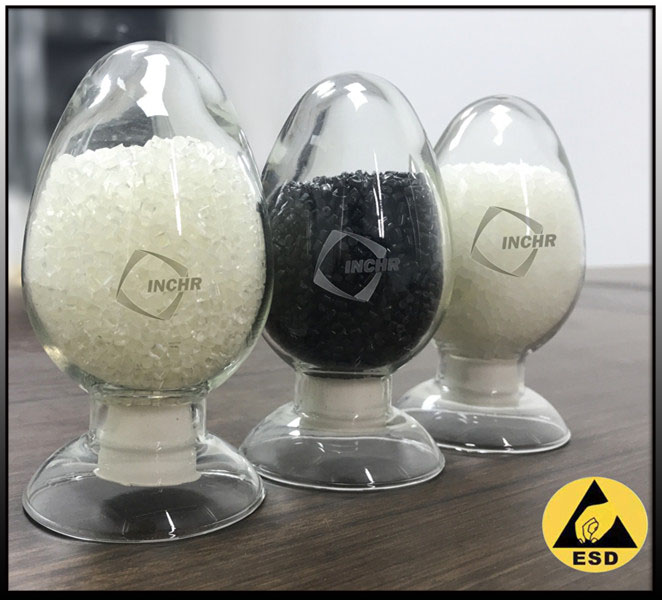ESD Plastic Solutions: Shielding Your Sensitive Electronics from Harm
In the high-risk world of modern electronics manufacturing, handling and packaging, static electricity can be very harmful. This is where ESD Plastic Solutions step in as the essential defense line, moving far beyond the limitations of standard plastics.
Standard plastics are notorious insulators. They readily generate and hold onto static charges through common actions like friction, separation, or even just movement. When this charge discharges onto a sensitive component like a microchip, PCB, or sensor, it can cause immediate catastrophic failure or latent damage that manifests later, leading to costly field returns and reputational harm.
Why “ESD-Safe” Matters More Than Ever
For electronics, humans can’t detect voltages lower than 20 pays, and because electronics are small, static electricity can fry precision circuitry. Relying on plain plastic or improper packaging is too risky.

How ESD Plastics Solve the Problem
Antistatic plastics are materials specifically designed to control static electricity. The antistatic effect is achieved through different material ratios::
Conductive Plastics: These incorporate conductive fillers (like carbon fiber, carbon black, or metal fibers) creating a continuous conductive path. This allows static charges to flow through the material to ground extremely quickly (< 0.1 seconds), preventing charge build-up and enabling a rapid, safe discharge path. Ideal for permanent fixtures, trays, and flooring.
Static Dissipative Plastics: These use different fillers (often proprietary additives) to create a higher level of resistivity. They allow charges to flow across the surface more slowly and controllably (typically in tenths to several seconds), preventing rapid, damaging sparks. This is often preferred for handling tools, work surfaces, and packaging where slower discharge is safer.
Shielding Plastics: These materials incorporate conductive layers or networks designed to block external electrostatic fields, acting like a Faraday cage. This protects sensitive components inside packaging or enclosures from ESD events happening outside.
Key Advantages of Implementing ESD Plastic Solutions
Component Protection: The primary benefit – drastically reducing ESD-related failures, scrap, and rework costs.
Process Reliability: Minimizing unexpected downtime caused by damaged components improves production flow and predictability.
Enhanced Safety: Reducing static build-up lowers the risk of sparks in potentially flammable environments.
Product Longevity: Protecting devices from latent ESD damage ensures they perform reliably throughout their intended lifespan.
Compliance: Meeting stringent industry standards like ANSI/ESD S20.20 or IEC 61340 is essential for many electronics manufacturers; ESD-safe plastics are fundamental to compliance programs.
Material Versatility: ESD properties can be engineered into a wide range of base polymers (Polycarbonate, ABS, PP, PE, PET, Acetal, Nylon, etc.), allowing solutions tailored for specific strength, clarity, chemical resistance, or temperature requirements.
Durability: Engineered plastics offer excellent mechanical properties, ensuring reusable solutions like trays, totes, and fixtures last for years, providing long-term ROI.
Applications Where ESD Plastics Are Critical
SMT Assembly: Reels, trays, feeders, pallets, work surfaces.
PCB Handling & Storage: Racks, boxes, dividers, magazines.
Component Packaging: Tubes, trays, bags (often combined with shielding), clamshells.
Cleanroom Equipment: Furniture, carts, containers, tools.
Test & Rework Stations: Benches, mats, hand tools, soldering iron tips.
Automated Handling: Robot end-effectors, conveyor components.
Medical & Diagnostic Equipment: Protecting sensitive internal electronics during manufacturing and service.
Choosing the Right ESD Plastic Solution
Selecting the optimal material isn’t one-size-fits-all. Consider:
Required ESD Performance: Is rapid grounding (conductive), controlled dissipation (dissipative), or external field shielding needed? What surface resistance range is specified?
Mechanical Needs: Strength, impact resistance, rigidity/flexibility, wear characteristics?
Environmental Factors: Chemical exposure, temperature range, UV exposure, sterilization requirements?
Aesthetics: Is color or transparency important?
Regulatory Compliance: Are specific standards or certifications mandatory?
Cost vs. Performance: Balancing initial material cost against protection level and longevity.
Investing in Protection is Investing in Success
Implementing robust ESD Plastic Solutions is not merely an expense; it’s a strategic investment in quality, reliability, and cost control. The potential losses from ESD damage – component costs, production delays, warranty claims, brand damage – far outweigh the investment in proper static control materials.
Don’t let unseen static charges undermine your electronics operations. By understanding the risks and leveraging the right engineered plastics, you can create a safe, reliable, and efficient environment for your sensitive components from start to finish.
Ready to find the perfect ESD Plastic Solution for your application? Explore our range of engineered materials or contact our experts today for a consultation!




